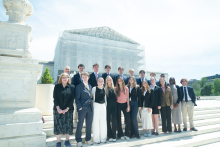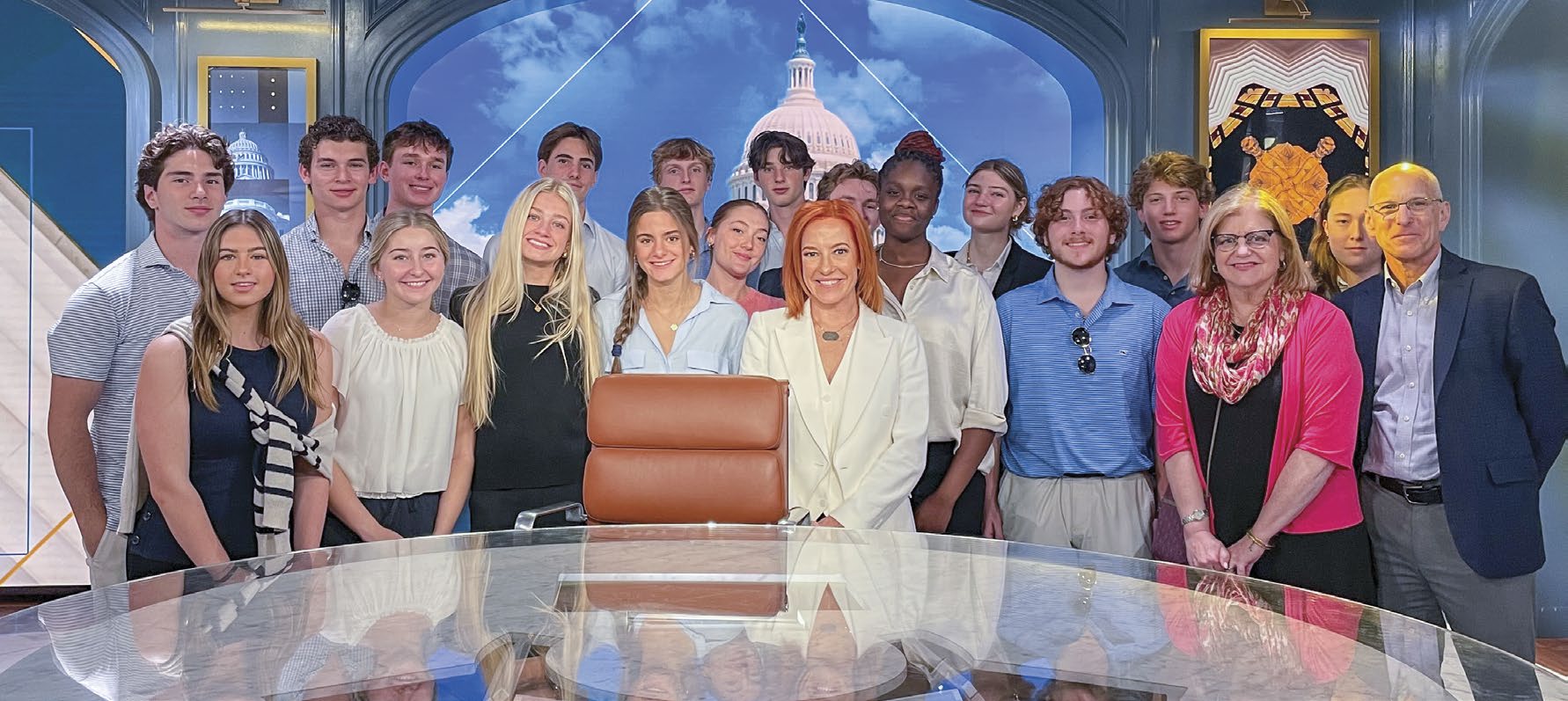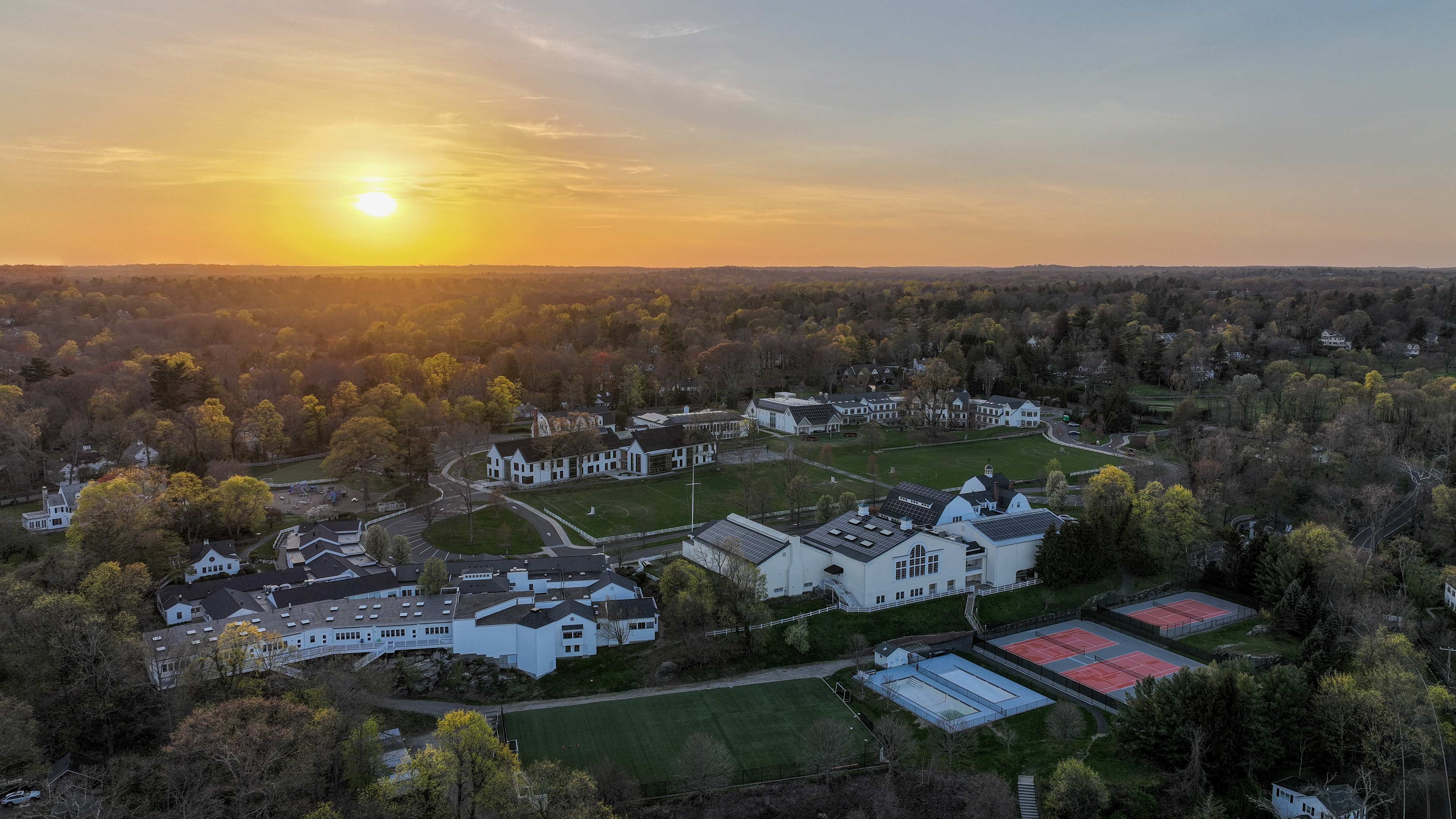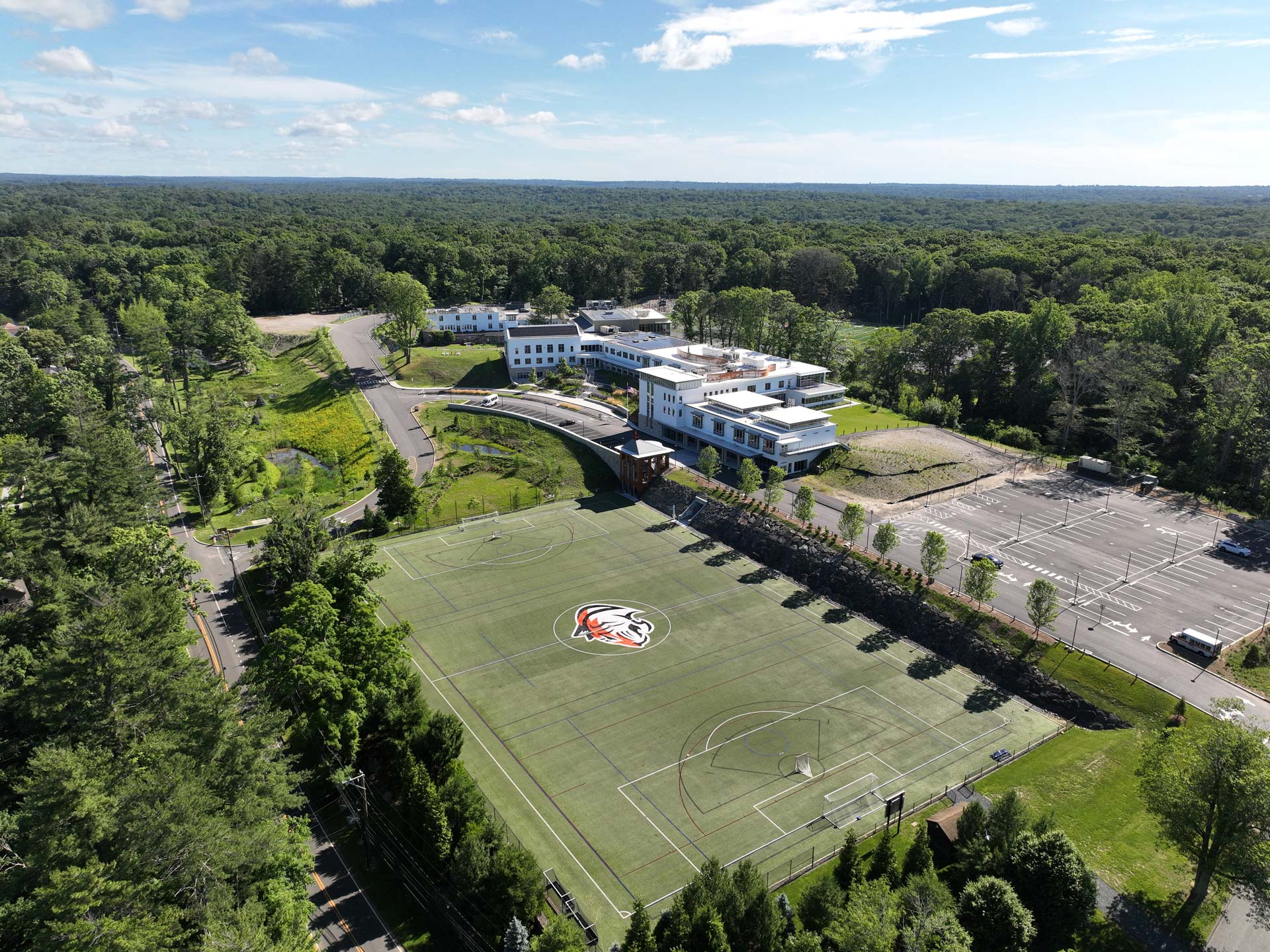
FOR UPPER SCHOOL CONSTITUTIONAL LAW STUDENTS, THEIR TRIP TO WASHINGTON, DC, BECAME UNEXPECTEDLY HISTORIC WHEN THEY WITNESSED A MOMENT OF LEGAL HISTORY UNFOLD.
On an April visit to the Supreme Court, the class observed the court as Edwin S. Kneedler, deputy solicitor general, argued his 160th and final case before the nation’s highest court. At the conclusion of oral arguments in Diamond Alternative Energy v. EPA, Chief Justice Roberts rose to his feet.
“Justice Roberts stands up and says, ‘I’d like to honor something special here. My friend Ed Kneedler has argued 160 cases, and I believe this is his last case. That is the record for modern times,’” recounted Steele Barhydt, an 11th grader.
What followed was extraordinary. The entire court, including all justices, gave Kneedler a standing ovation—a rare break from the traditional decorum of the courtroom where applause is typically forbidden.
“It was an incredibly special moment in court history and we got to witness it,” said Steele.
The experience continued when students spotted Kneedler in the Court cafeteria following the proceedings. “A few of us went to shake his hand. I’m a really big fan and have been reading his cases and listening to his oral arguments,” said Penelope Shepherd, a 12th grader.

Constitutional Law Course
This memorable trip was the culmination of Paula Russo’s rigorous Constitutional Law course at GCDS, where students spent an entire year studying Supreme Court cases and participating in moot court exercises. The class—one of the Upper School’s Advanced Applied Social Sciences courses— explores the Court’s role in American society through analysis of constitutional topics such as freedom of speech and religion, due process, equal protection, and substantive due process. Students read real Supreme Court cases and “brief” them every night, then analyze and discuss them the next day.
“The goal of the course is for students to develop high-level analytic thinking and writing skills,” said Ms. Russo, who herself is a Harvard-trained lawyer and former law school dean.
Ms. Russo uses a modified Socratic method to help students develop their analytical thinking skills through speaking in class. In fact, their engagement with their peers’ arguments and ideas represents 30 percent of each student’s grade. “Pulling the legal issues and theories out of a case is difficult at first, but it’s really gratifying to see how the students sharpen their thinking as the year progresses,” she said.
Students wrestle with current events, cases on the Court’s docket, and presentday political realities. “I tell the students that I am not interested in their opinions. I want to hear rational arguments, supported by fact and sound reasoning,” said Ms. Russo.
“We are all able to put our biases aside to analyze things generally from a legal perspective, which is the point of the class,” said Steele.
During this spring’s moot court sessions, students argued, as one example, Oklahoma Statewide Charter School Board v. Drummond, a pending Supreme Court case that centers on the question of whether religious charter schools are permissible under the Establishment Clause of the First Amendment. In moot court sessions, students take the roles of appellate attorneys, preparing and delivering oral arguments, and justices, who grill attorneys on the facts and arguments of the case.
Steele considered himself a more reserved student before this class, but he has become a confident public speaker who enjoys a good debate. “When you are trying to convince someone of something, you need to use rhetoric and gesticulate.”
Penelope enjoys the logic of legal reading and writing. “To me, law seems like the objective version of the humanities. You want as little fluff in legal writing as possible.”
For these students, the chance to see the justices in person offered insights that simply reading about the Court could never provide.
“It was a special once-in-a-lifetime opportunity to see the justices in person and where our laws get made,” said Steele. “You feel the weight of history and the symbolism of our American legal system is literally carved into the ceiling and walls.”
Beyond the Court proceedings, the trip included meetings with various legal and political professionals, including two alumnae: former White House Press Secretary and MSNBC commentator Jen Psaki ’93 and Betsy Wright Hawkings ’78, who runs a firm counseling politicians and staffers on non-partisan techniques. They also met with Adam Liptak, Supreme Court reporter for the New York Times, and Dan Lippman, White House reporter for Politico
In addition to the Supreme Court, the class visited the 2nd Circuit Court of Appeals in Manhattan earlier in April and met with Judge Richard Sullivan to discuss law and the courts. The students saw two oral arguments and marveled at the command of detail that the appellate attorneys displayed. Arguments usually last 18 minutes, but one continued for over an hour. “It was a ‘hot bench,’” Ms. Russo explained.
For many students, the Constitutional Law course has been transformative. “After taking Con Law and writing and reading law briefs, I realized I could work hard,” said Penelope. “I realized I had a passion for the law, and that I wanted to do this for the rest of my life.”
GCDS Law Review
The GCDS Law Review published its first edition earlier this school year and a second edition in May. Founded by students Sol Hochman ’24 and Charlotte Dell’Olio ’24, the publication features articles on diverse legal topics. The GCDS Law Review operates as a club affiliated with High School Law Review, a national program that promotes “agreeable disagreement” through constitutional study.
Penelope, who joined after taking a Constitutional Law course last year, now serves as chief editor and works with a team of 10 students. Under the guidance of Ms. Russo, the group meets regularly to discuss interesting legal cases and edit papers. For the current issue, Penelope wrote about “the anti-commandeering doctrine, which is the reason why sports betting is now allowed.”
“This is a tremendous opportunity for our students and GCDS,” notes Russo. “It’s truly student-driven and aligns with national standards for academic excellence.”










.JPG&command_2=resize&height_2=85)





.jpg&command_2=resize&height_2=85)





